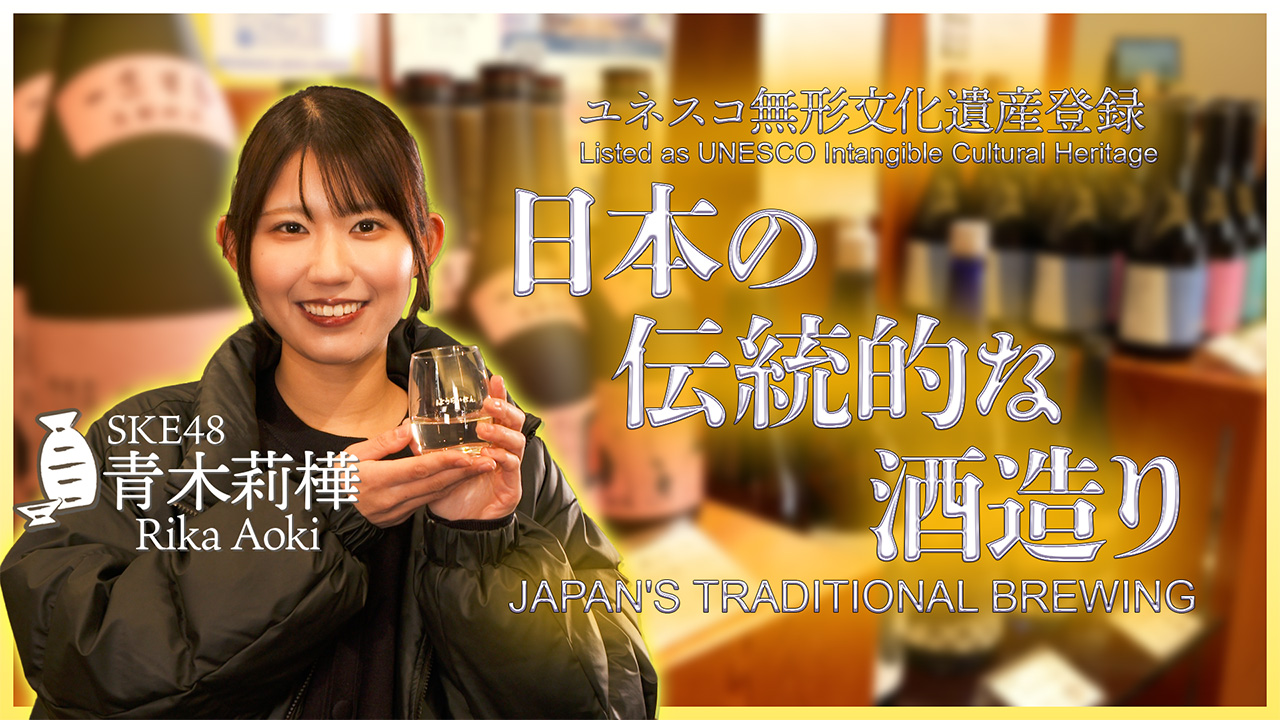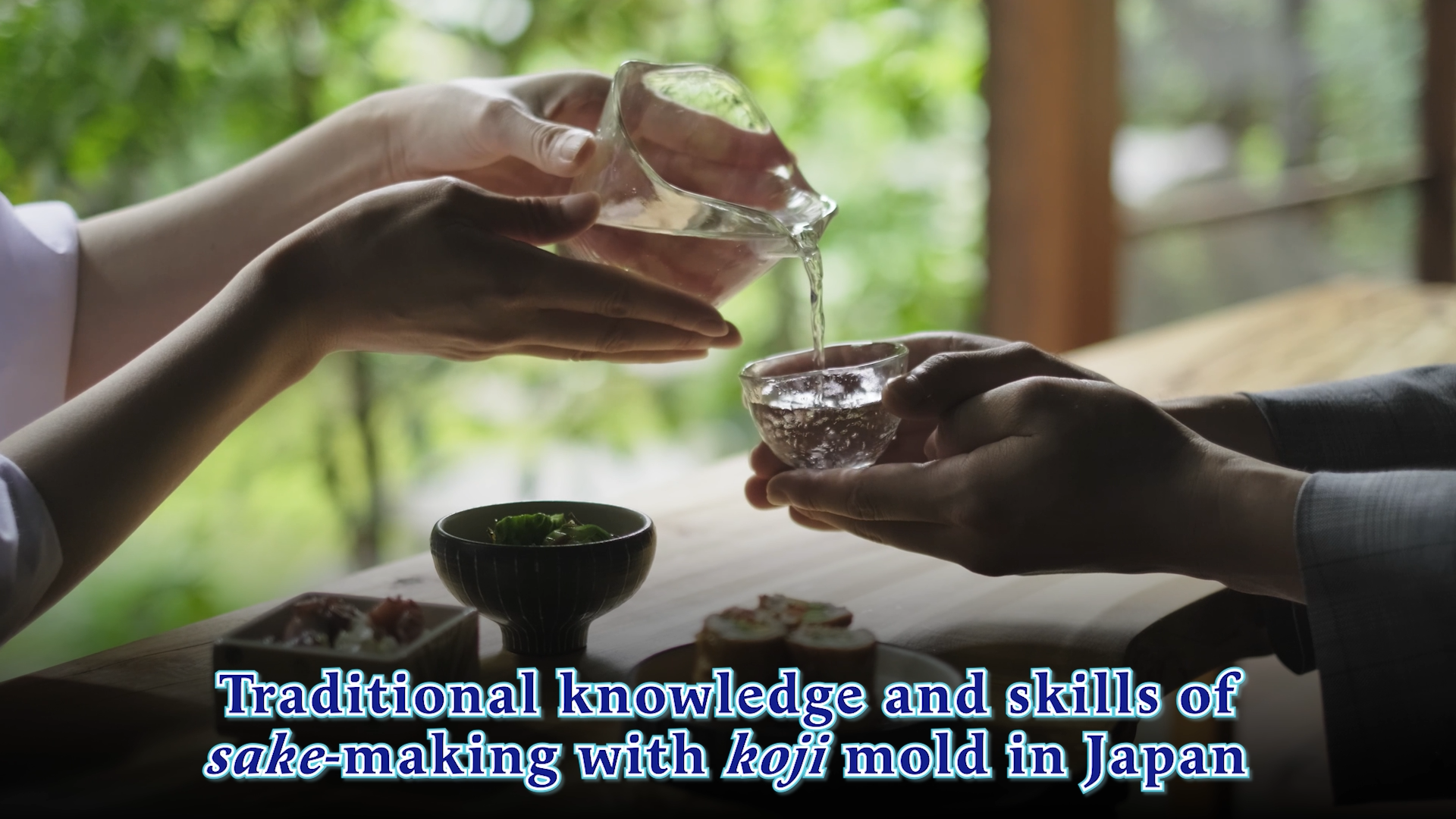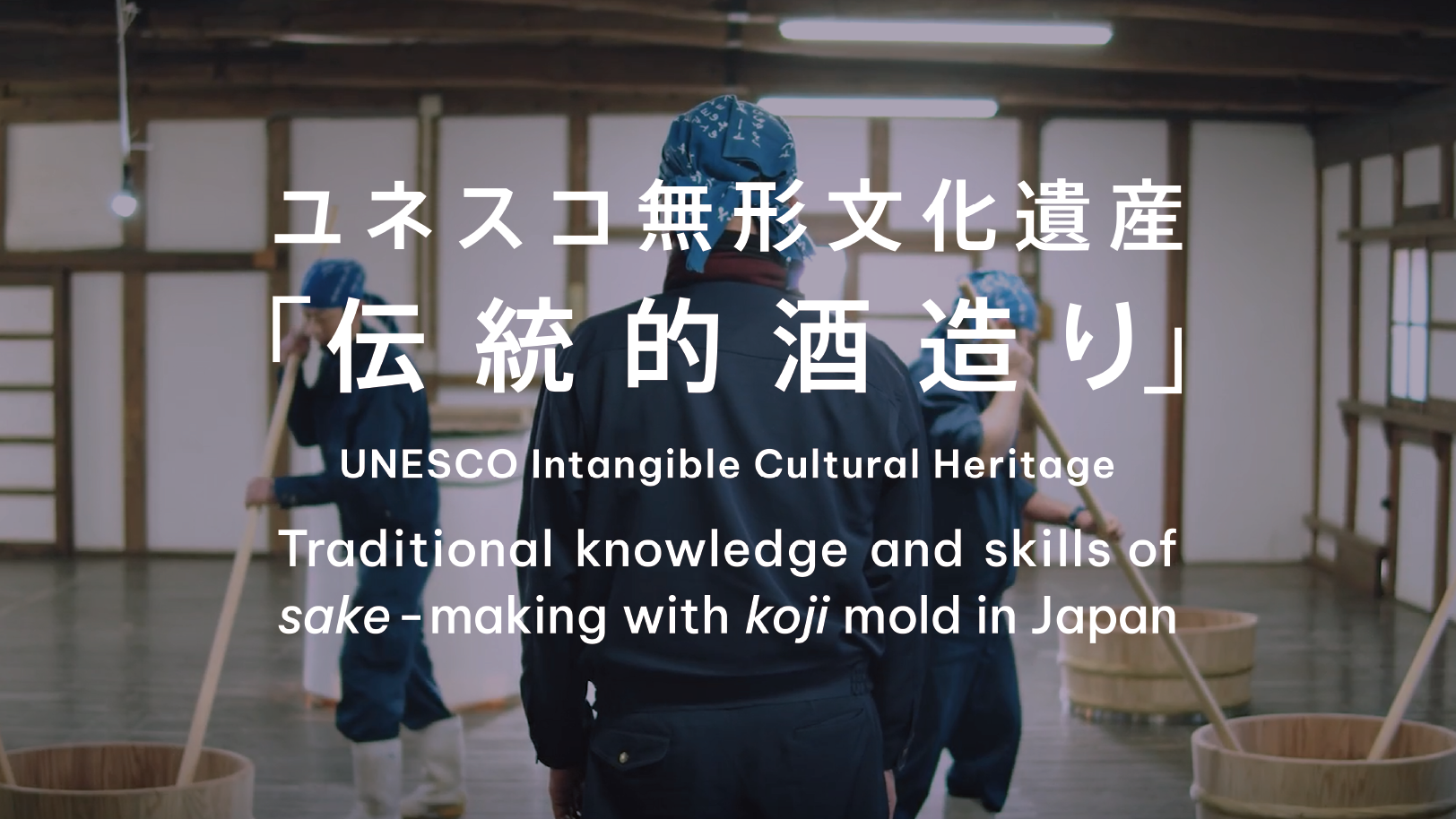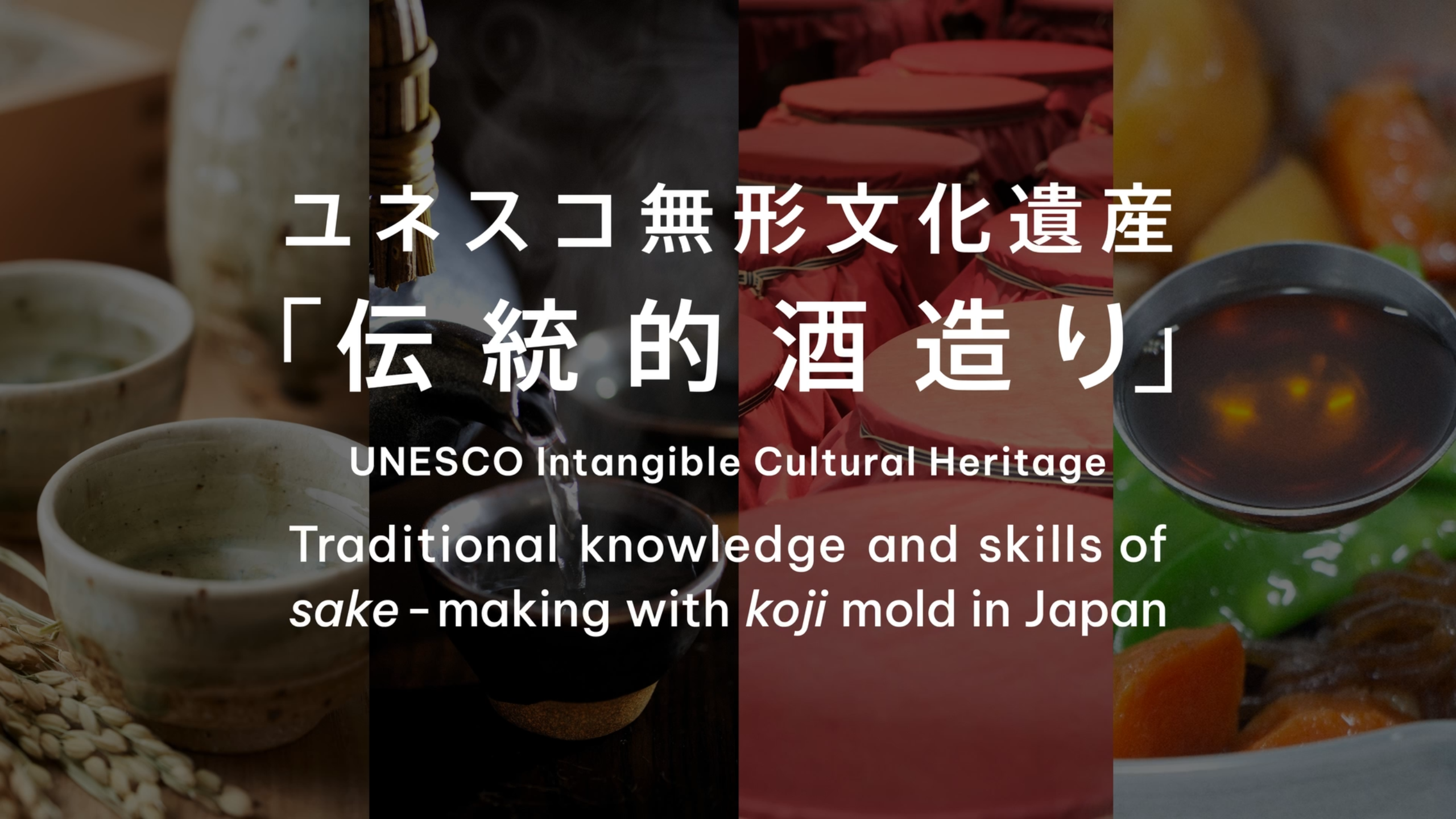JAPAN'S TRADITIONAL BREWING (official name "Traditional knowledge and skills of sake-making with koji mold in Japan") refers to the sake brewing technique using koji mold, established by toji (master brewer) and sake brewery worker with their many years of experience. It is said that the original form of JAPAN'S TRADITIONAL BREWING was settled upon more than 500 years ago. This technique developed in accordance with the climate and natural features of various regions in Japan. It has been passed down to the production of nihon-shu, shochu, awamori, mirin and more. Sake also plays an essential role in social and cultural events in Japan such as festivals and weddings. JAPAN'S TRADITIONAL BREWING is considered to be the underlying technique which supports these events. This JAPAN'S TRADITIONAL BREWING was registered as UNESCO Intangible Cultural Heritage at the Nineteenth Session of the Intergovernmental Committee for the Safeguarding of the Intangible Cultural Heritage (held in Paraguay) on December 5, 2024.
What is a UNESCO Intangible Cultural Heritage?
An “Intangible Cultural Heritage” refers to a
type of culture,
like performances, rites and
festivals, traditional craft techniques and
so
on,
that are not actual physical things but
have been passed on down through
generations
and are closely connected with
a region’s history, lifestyle, and so on.
Under UNESCO’s Convention for the
Safeguarding of the Intangible Cultural
Heritage,
the Representative List of the
Intangible Cultural Heritage (the
registration
list)
is drawn up and that intangible cultural
heritage is then protected
in order to build
momentum for mutual respect of culture.
The Intergovernmental Committee,
which decided to inscribe 'Traditional
knowledge and skills of
sake-making with
koji mold in Japan' as an Intangible
Cultural
Heritage of Humanity, recognized the
efforts
by sake breweries all over the
country.
These efforts
were evaluated on four key
points that are considered to contribute
to the
United Nations' Sustainable
Development Goals (SDGs).
The first point is that protecting the
environment to ensure clean water
and the
production of
grains, including rice, necessary for sake-making contributes
to
'food security' and 'environmental
sustainability.'
The second point is that there are no gender
restrictions for bearers such
as toji and
kurabito, promoting ‘gender equality.’
The third point is that the participation of
many residents, including
farmers who
provide raw materials, fosters social
cohesion within
communities, contributing
to ‘peace and social cohesion.’
The fourth point is that by-products of the
sake-making process,
such as the sake
cake,
are
repurposed for secondary products
such as mirin. This efficient
use of resources
supports
'responsible consumption
and production.'
Many sake breweries are now promoting
environmentally friendly
sake-making.
Expectations for
sake-making are growing,
particularly in
fostering a society and
economy based on a regional circular system.
This includes cooperation with agriculture,
a
key local industry, and efforts to
conserve forests.
SDGs: International goals established to achievie a sustainable and better world by 2030, as set out in the ‘2030 Agenda for Sustainable Development’ adopted by all member states at the UN Summit in September 2015. These consist of 17 goals and 169 targets.
Sake cake: The remaining part after sake has been separated from the moromi, a mash made by fermenting koji, steamed rice, water, and yeast. It is rich in rice protein and amino acids from the yeast and is used as a flavouring and manufacturing ingredient.
Movie
Brochure
Events
The National Tax Agency and the Regional Taxation Bureaus have been working with the Agency for Cultural Affairs and the Society of Japanese Koji-based Sake Making Craftsmanship along with other groups to conduct promotional events and other activities in order to help more people both in Japan and overseas understand the history and culture of "Traditional knowledge and skills of sake-making with koji mold in Japan."
Information about the Japanese alcohol beverages, etc.
This map shows sake breweries in each region of Japan, their labels, and more. We hope it will be of help to you when planning your sightseeing and visits to sake breweries.
*Some breweries may require reservations to visit.
DetailsGeographical Indication
The geographical indication (GI) system for liquor products is a system that the GIs for the products can be used by only the producers of the area, where given qualities and reputations of the liquor products are essentially attributable to their geographical origin.
Details
Koji (Kome-koji) is steamed rice that has been cultivated with a type of
mold called koji-kin (Aspergillus oryzae).
It is the essential ingredient to the Japanese sake-making process.
Please refer to the brochure for more details.
















